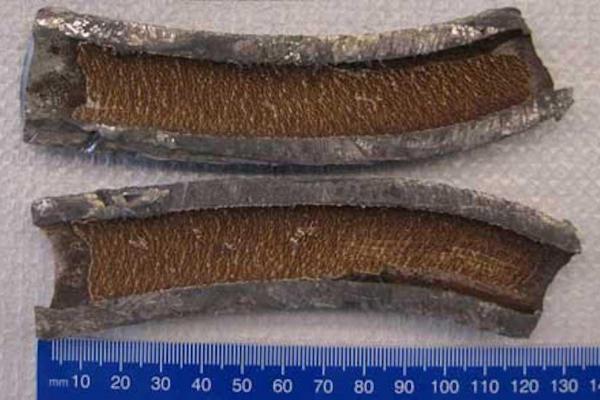
July 29 (UPI) — Researchers have found evidence of missing lead in water pipes in Flint, Mich., confirming the origins of the health crisis.
An analysis of the interiors of several service pipes revealed a Swiss cheese-like pattern — the holes marking where lead used to be.
The latest findings by University of Michigan scientists confirm the public explanation for the water crisis: that untreated, corrosive water caused lead to leach from the city’s water pipes, poisoning thousands of Flint residents over a period of 17 months.
Researchers studied the layer of lead rust from cross-section samples of 10 service pipes in Flint’s water system. They analyzed both the layer’s texture and chemical composition, and used their observations to estimate the amount of lead leaching into the water system.
Scientists determined the average Flint pipe released 18 grams of lead during the 17 months that untreated, corrosive water ran through the system.
The results of the study were published this week in the journal Environmental Science and Technology Letters.
“This is the amount of lead that would have entered a single home,” lead study author Terese Olson, an associate professor of civil and environmental engineering at Michigan, said in a news release. “If we average that release over the entire period the city received Flint River water, it would suggest that on average, the lead concentration would be at least twice the EPA action level of 15 parts per billion.”
Not all of the leached lead was consumed by drinkers. Some was washed down the drains and some likely remains in private plumbing systems.
Other water systems feature corrosive water and lead pipes, but most treat their water supply with orthophosphates. The chemical compound doesn’t prevent rust formation, but it does prevent the breakdown of the rust layer found inside most lead service pipes.
“Beyond implications for Flint, we demonstrated that small changes in water chemistry can release what was stable lead in a fairly quick pulse,” said study co-author Brian Ellis, an assistant professor of civil and environmental engineering at Michigan. “This is a known condition. So while we weren’t surprised, being able to show it underscores the importance of maintaining uninterrupted lead corrosion control.”





